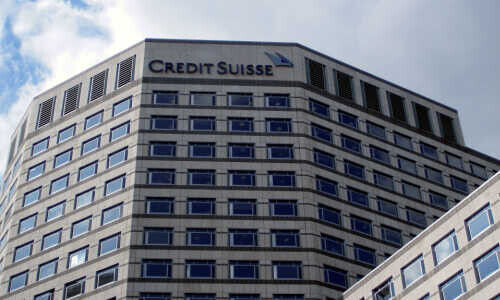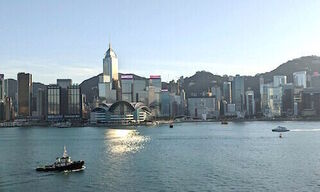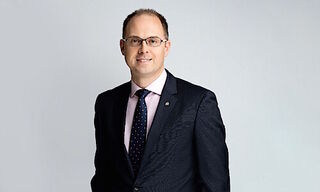The Swiss bank consistently shifted investment bank risk into its more opaque money management after the 2008/09 financial crisis.
The closure on Thursday of another $1.2 billion in funds with ties to a troubled line of supply chain products is the latest chapter in a bitter two weeks for the Zurich-based bank. The reason is Greensill, the biggest in a series of setbacks for its asset management.
The last 12 months have been catastrophic for the unit. Part of Credit Suisse's private banking unit, asset management's revenue fell in 2020 by one-third on the year and swung to a loss; the Greensill debacle won't show up in financial results until this year.
Exits Pile Up
The last 12 months were also beset by a series of exits and product closures in asset management: Credit Suisse quietly shut the so-called QT fund, which had once held great promise. But quantitative strategies didn't withstand the market turmoil when the pandemic broke out. The fate was shared by Simag, a Credit Suisse co-financed quant start-up which was folded.
Credit Suisse shut a property fund, was forced to repay $1.4 billion in capital back to investors of insurance-linked securities, and kiss off $450 million in relation to a major stake in New York-based hedge fund York Capital.
Blown Over In Turmoil
The common denominator behind the accumulation is Covid-19 and pandemic-sparked market ructions. The initial conclusion is that if asset management flourished and hiked profits during years of bull markets, it imploded as soon as it was tested.
The reasons lie more than a decade in the past, in the wake of the 2008/09 financial crisis. Regulators began forcing banks to patch over thin capital layers, throttling appetite for risk by making it far more expensive.
Investment Bankers Direct
The response from Switzerland's largest banks was exemplary: first UBS in 2011 and then Credit Suisse dramatically scaled back their investment banks. Wealth management became the cornerstone of their respective strategies, prop trading and other capital-intensive business was abandoned.
Credit Suisse didn't take the step more seriously until Tidjane Thiam took over as CEO in 2015. With Eric Varvel, the bank entrusted its asset management unit to an investment banker – as it had for the ten previous years as well.
In 2007, ex-Lehman Brothers banker Rob Shafir had taken over; five years later, Bob Jain, a died-in-the-wool investment banker and long-standing prop trading head, took the helm.
Transfer Of Activities
Under Shafir and later Jain, the unit underwent a shift that saw some investment banking activities which had fallen out of favor under the new regulation resurface in asset management. Traders around Jain, whose jobs were effectively abolished when the Volcker rule wiping out most forms of buying and selling securities on a bank's own book, found a new home.
A systemic trading group was to build quantitative products for institutional investors and was subsumed into a wider alternative asset management push. What then became of the former traders and hedge fund managers is murky.
Until 2016: markets head Brian Chin revealed a new unit for quant strategies called systemic market-making group, or SMG. The unit had until then tapped capital from Credit Suisse's investment bank as well as its Asia-Pacific activities for its high-volume bets.
Capital From Investors
The idea was to take more capital from asset management – and clients – as well as offer the products there, in a capital-efficient revenue stream, Chin told investors. «Credit Suisse's giant internal hedge fund,» as commentator «efinancialcareers» put it, which viewed the move into asset management as regulatory arbitrage to comply with the Volcker rule.
The QT Fund shut last year was born out of the SMG effort. Three years ago, Credit Suisse carved out another hedge fund, Qube, from the same unit.
The Greensill fund debacle, which threatens Credit Suisse with major financial as well as reputation damage, are also activities more traditionally at home in investment banking: the U.K. firm sat at the intersection of capital and lending, exploiting the spectrum of corporate finance.
What Risks Loom?
It isn't clear where Credit Suisse's risk management, compliance, and due diligence on Greensill failed, nor is it clear what other risks still loom in the asset management unit.
The wider unit's goodwill positions, which currently stand at just north of 1.3 billion Swiss francs, from more than 1.5 billion francs in 2019, tell part of the story. The goodwill that still lies in Credit Suisse's books is from various acquisitions during Shafir's tenure, like that of Hedging Griffo in Brazil, or York.
The most recent episode lays bare that Credit Suisse's asset management needs repositioning, leadership, and a different culture including more clearly severing its investment bank ties.



























